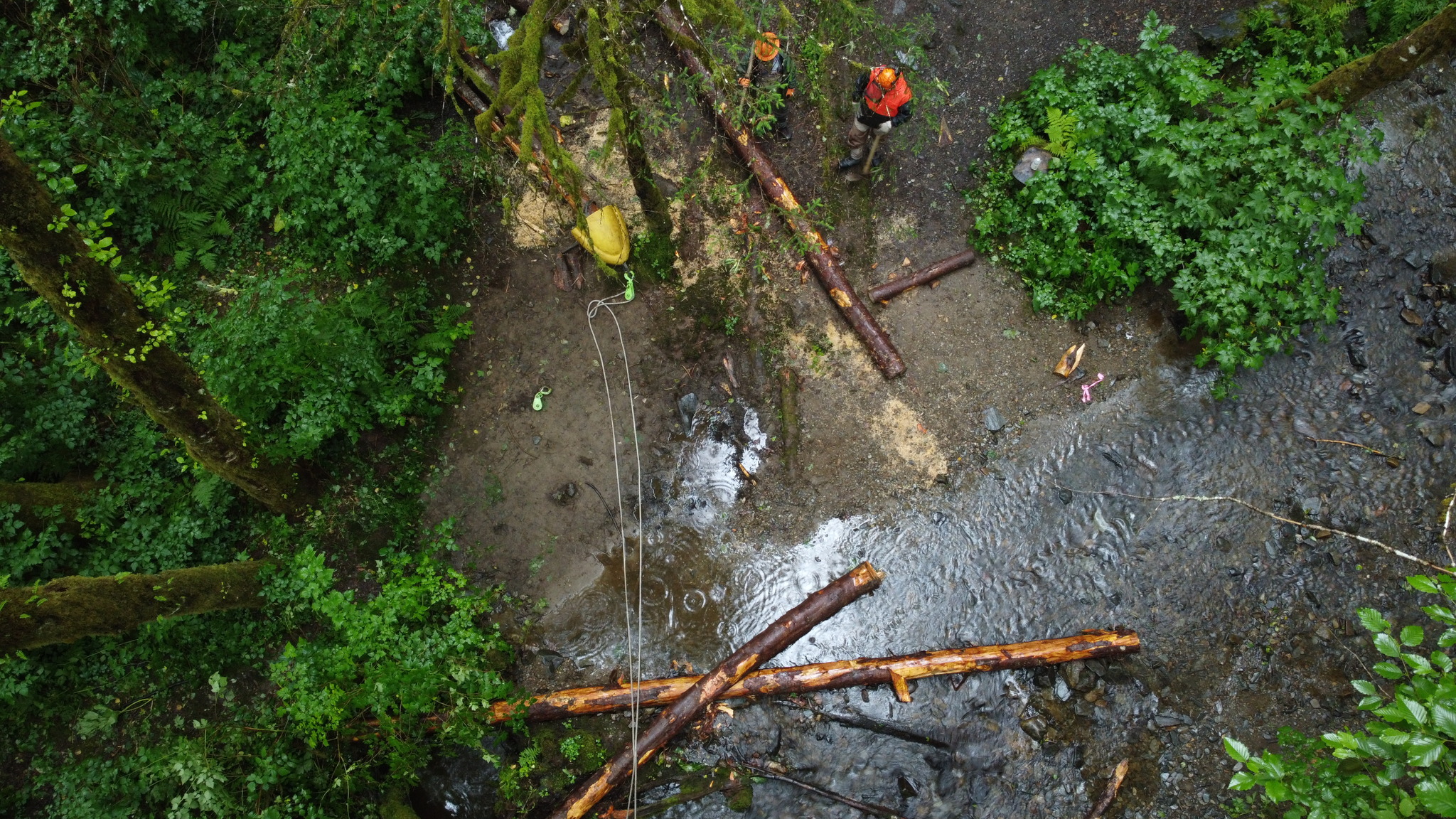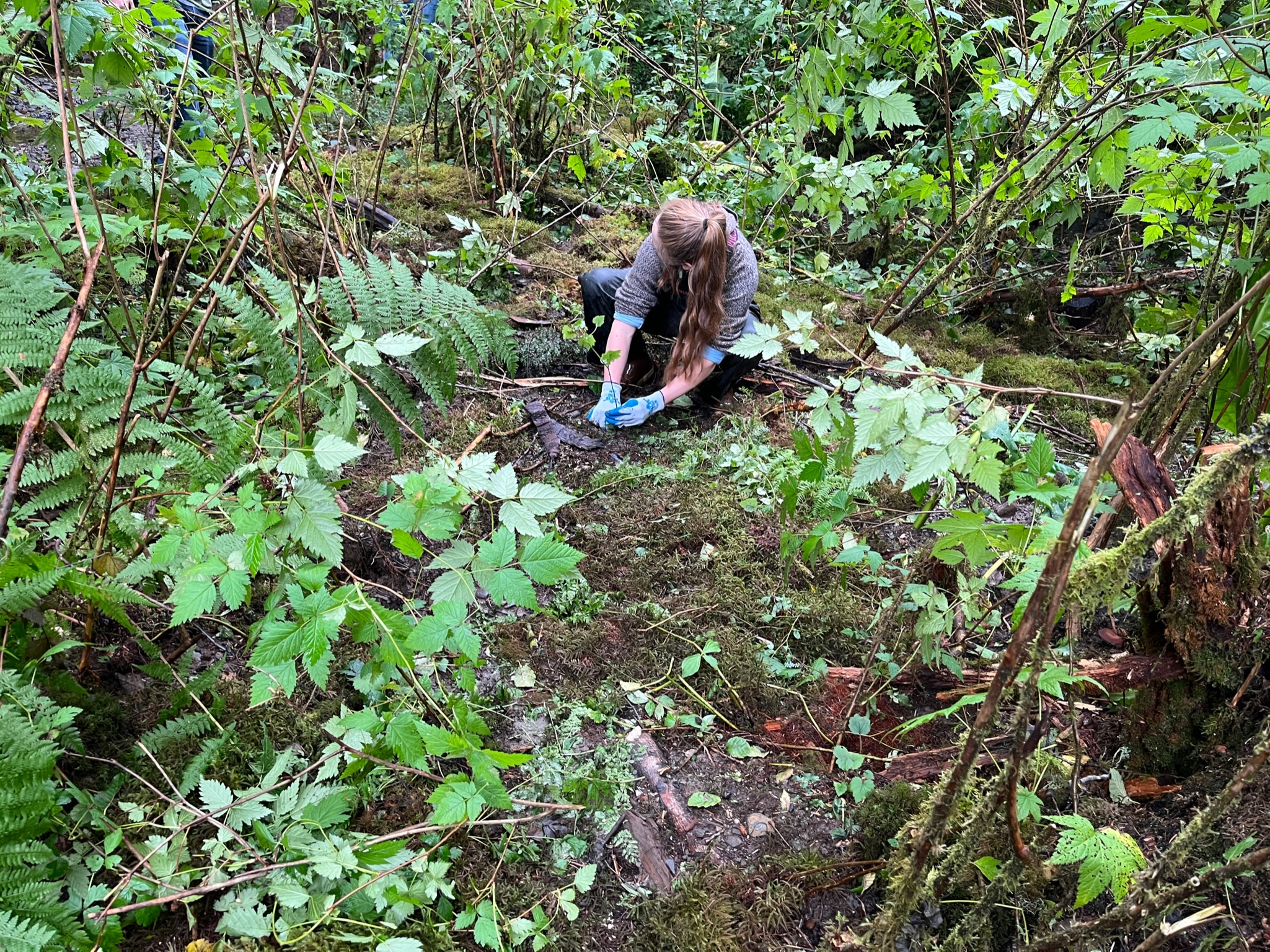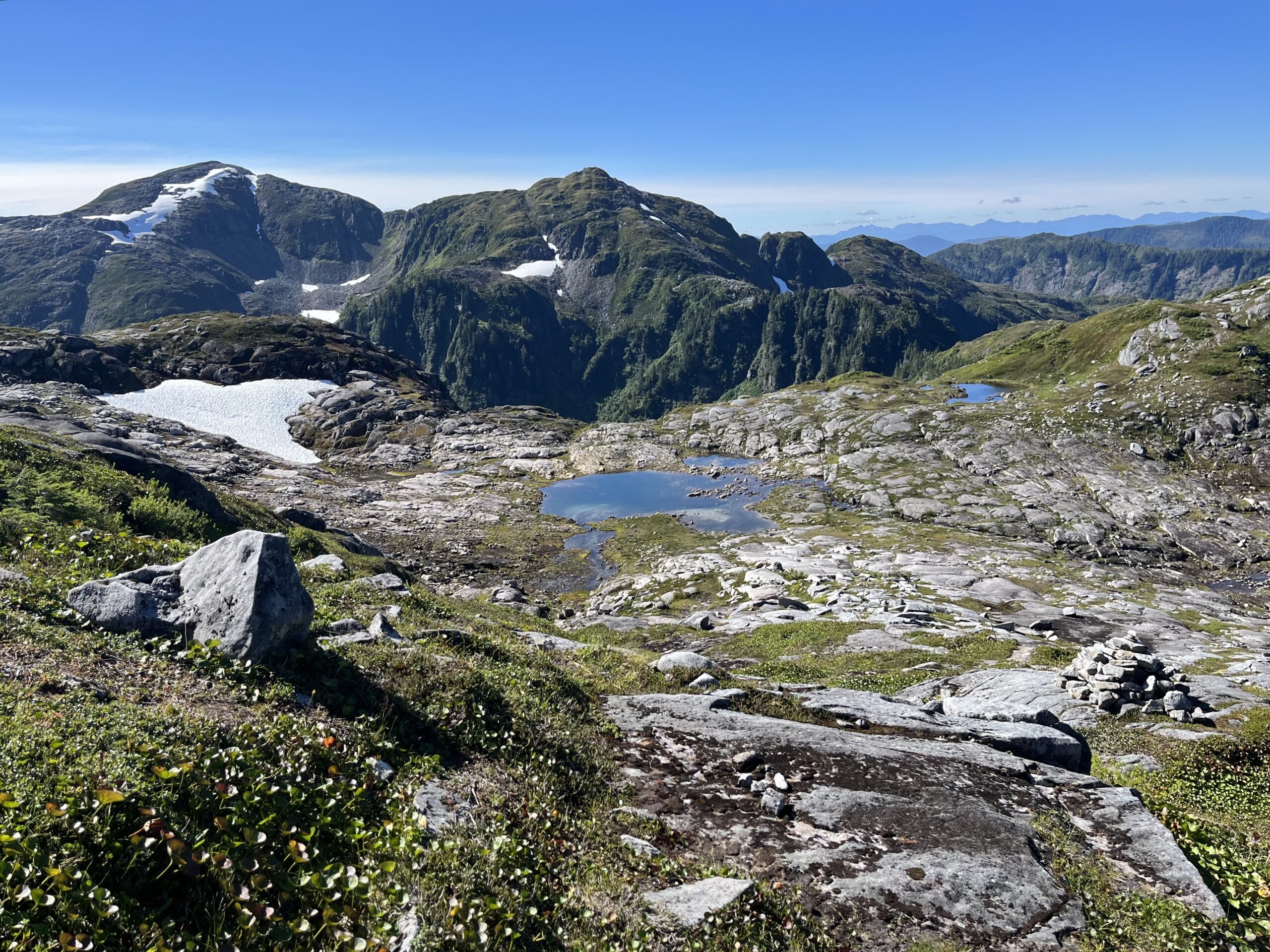This month: a restoration story. One of water, salmon and seeds.
Seed collection is a necessary step toward restoration. But this month, we partook in another type of restoration. For one week, we partnered with the larger Tongass NF Fisheries crew and Ketchikan Indian Community (KIC), diverting and re-building a stream.

Toward the beginning of our season, I asked Val (our lovely supervisor), what restoration meant to her. She told me she sees restoration as a two-fold concept: 1. to repair damage we have done in our past, and 2. to enhance and advance natural processes that will eventually occur without human aid. This month’s stream restoration project channeled these perspectives into practice, thinking 100 years down-the-line.
Our large group of people, adorned head to foot in waders or their Grundens and Xtratufs, spent lots of time with and in the river and mud that week. We hauled over 10 logs into the stream, wrapping rope around trees and using blocks to weave the rope through and then drive the logs in. We dug over 10 trenches to place those logs, diverting stream flow and re-establishing the s-curves of the water’s movement.
It was empowering work. Rejuvenating and physically exhausting. It was an excellent group of people. And it was a beautiful thing to be able to see the fruits of our labor. It was also humbling to see the force and capacity of water, to acknowledge that we can dig trenches and place logs and watch the sediment fill, but the river will do its own work to restore, to re-story. This is a river’s restoration story, we are just the hands to help in the process.
(And in a couple of years, hopefully we have a seed-mix to spread along the stream in the aftermath).


All season, I have watched salmon runs swim upstream — swaying bodies moving in company with others against a strong current. While out collecting seeds at Ward Lake, (a common trail and accompanying campground area near town), mostly Spirea splendens (Rosy Spirea) and Carex aquatilis (Water Sedge), you could smell them before you could see them: rotting salmon on the lake shore. When I’d look down in the water and see their carcasses beginning to give way, I’d whisper: “good job. you made it.” Their struggle is all at once inspiring and heart-wrenching. As I bent down to strip seeds along the lake shore, I listened to the beating rain and their relentless splashing.

In late August, Mather and I backpacked the Deer Mountain Traverse, an alpine trail covering 18 miles and spreading along four peaks and a rocky ridge-line. Cassiope mertensiana (White Mountain Heather) and Vaccinium ulinignosum (Bog Blueberry), bursting with fruit, hung low to the ground. Arnicas and Gentians towered over them, tickling our ankles. I don’t believe I will ever get over how small and mighty alpine plants are. Our legs were tired, and our lungs exhausted. And even up there, nestled in the high mountains, water prevailed. Snow fields tapered into snow melt lakes and waterfalls funneled water down to lower lakes, rivers, streams, groundwater, ocean.
Alpine lakes, muskeg bottoms, puddles on pavement after it rains, the breeding grounds of rivers, and the ocean, broad and spreading. Water is everywhere.

